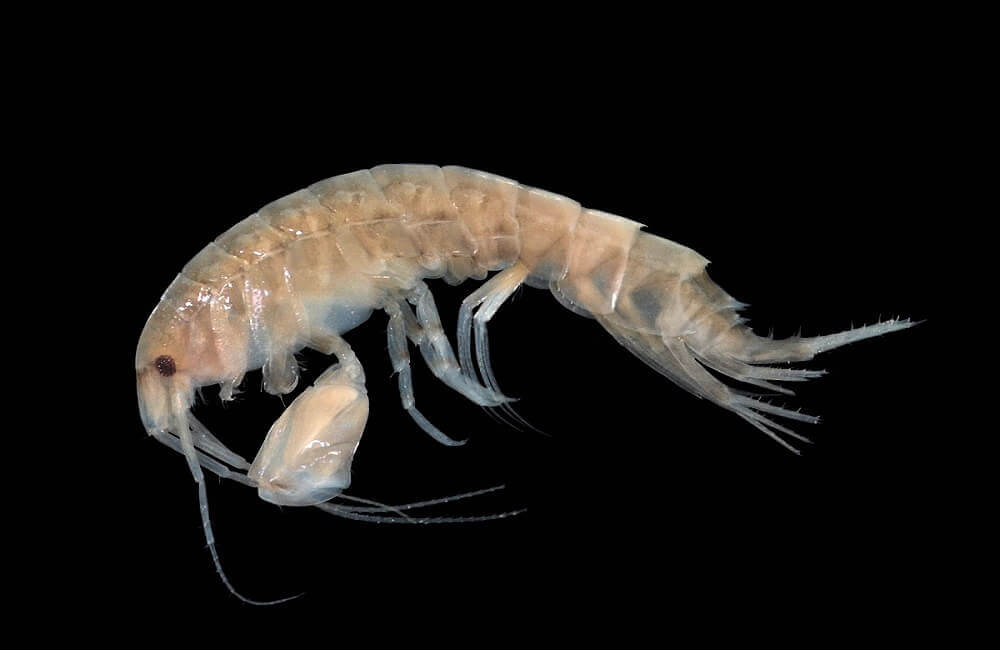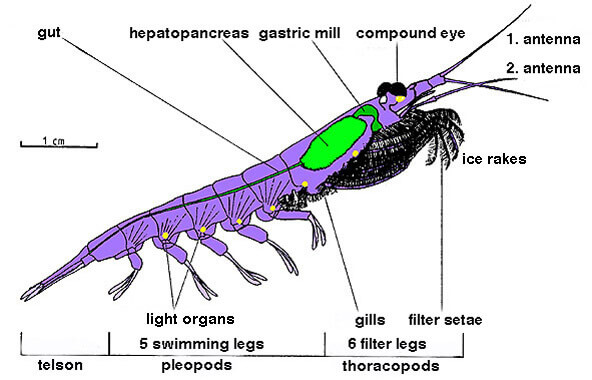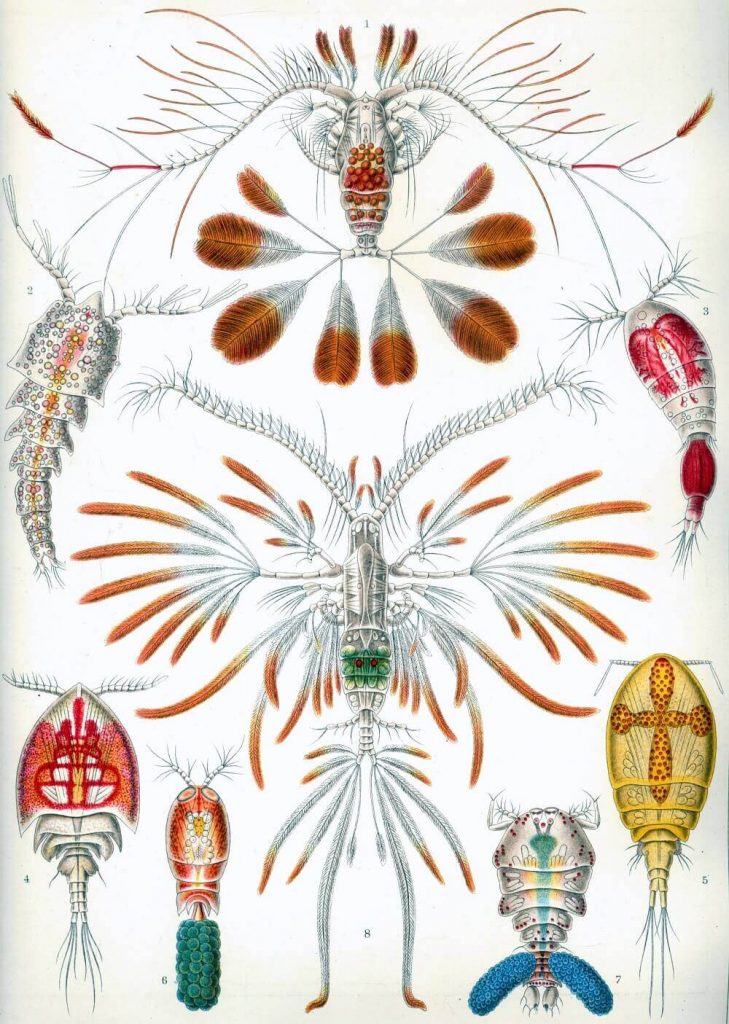
Crustaceans – often called Crustacea – are a very large group of arthropods with over a hundred thousand species. Crustaceans are the most populated animals in the ocean – even more than fish! However, they are not limited to oceans. In fact, they’re even not limited to water. You’ll find crustaceans on almost any location on the planet.
They are some of the most interesting organisms on earth, with their diverse and unique group of species. Not only are crustaceans an excellent natural way of controlling the marine population, but they themselves also serve as a tasty and nutritious meal to various beings (including us, human beings).
Being a part of the arthropod phylum, crustaceans are just so many that not all of them even move in the same way. In fact, not all of them even move! Many crustaceans, such as Barnacles, cannot move from one place to the other. They are stuck to a part of the seabed (sometimes stuck to the body of large fishes!) and they can just put their fins out of their shell to have food.
Modern research claims that Crustaceans are paraphyletic in nature, which means descendants from a common ancestor species. This is kind of obvious since most of them look and have almost similar features. Yet, they come in varying sizes, all the way from 13 feet to 94 micrometers, and they may also make us allergic to them!
What are some Examples of Crustaceans?
There are over a hundred thousand species of crustaceans. Various examples of crustaceans that you surely must have seen (even eaten) include the Hermit Crab, Horseshoe Shrimp, American Lobsters, Crayfish, Krill, Woodlouse, Brachyura, Barnacle, Isopoda, amongst others. An interesting fact: crustaceans are known to have over 67,000 species, ranging from sizes as small as 0.1 millimeters to 12.5 feet!
What is the Classification of Crustaceans?
Classification means the organization of species and groups of species according to observed similarities and differences. So where does this put the crustaceans?
Crustaceans are a subphylum of the Arthropoda phylum, coming under the “invertebrates” section of the animal kingdom. The main types of crustaceans include Branchiopods (Shrimps, Water Fleas), Remipedia (primitive crustaceans), Cephalocarida (Horseshoe Shrimp), Maxillopoda (Barnacles, Copepods), Ostracoda (Seed Shrimp), and Malacostraca (Crabs, Lobsters, Shrimps, Krill).
What are the Characteristics of Crustaceans?
Characteristics mean the features or qualities that typically belong to a particular species of a group of species. Here are some characteristics of crustaceans.

The key characteristics include:
- Exoskeleton: A hard exoskeleton made primarily from Calcium
- Segmentation: A segmented body with a first segment being head and last being fan-like tail
- Compound Eyes: Two compound eyes on the head (a compound eye is a collection of over a hundred eyes to act as an individual eye)
- Antennae: Two pairs of antennae, usually over the head
- Swimmerets: The abdominal segments have swimmerets (legs that have a fin-like structure to swim)
- Ganglia nervous system: Nervous system follows the Ganglia system (such as that of earthworms), with a primitive nerve cord.
- Claws or Similar Body Parts: Many Crustaceans often have a pair of claws to clutch and kill their prey and provide self-defense against predators.
Note that due to the extensive number of crustacean species on earth, you will not always find all of these characteristics in every species. You may observe that there are a few characteristics extra that you may see in some species. However, this is the general characteristic observed most often.
What do Crustaceans Eat and How do they Eat?
Of course, you must be wondering what do the crustaceans eat? Well, since there is such a wide range of crustacean species, it is obvious that there is a lot of variation in food.
Relatively smaller crustaceans such as shrimps and small crabs scavenge for food floating around in the water. This is often the remains of another fish/sea animal that was eaten off by another organism. Sometimes, they may think of raiding eggs of fish, but more than that, they never dare to fight and kill prey.
On the contrary, the larger crustaceans, inclusive of lobsters and large crabs typically like to find their food “alive” and slowly kill it to their pleasure. They hunt for small fish (sometimes large fish), kill it with their claws, and enjoy their meal. It is also a known fact that crustaceans may eat other crustaceans – including those of the very own species! So now we can also call them cannibals! Some crabs are also reported to eat seaweed and other plant life, though this is generally rare.
Moreover, a small population of crustaceans that are immobile, such as Barnacles, feed by filtering plankton from the water around them using their huge fins. Many scientists argue that they are not a part of the crustacean family due to the fact that their eating habits are significantly different from that of other crustaceans. However, their DNA sequencing is quite similar to other crustaceans.
Who are Crustaceans Eaten By?
While crustaceans eat a lot of other animals themselves, they are also eaten by other organisms. They are most notably eaten by fishes, octopuses, squids, even crocodiles! Surprisingly though, some birds such as Heron and Egrets also find crustaceans yummy. Moreover, some crustaceans eat other crustaceans, as mentioned above. Also, and you might know this, crustaceans are eaten by us – the humans!
Fun fact: In 2007, humans ate nearly 10.7 million tons of crustaceans, including crabs, lobsters, shrimp, crawfish, and prawns. From this, over 80% of the weight was from shrimp and prawns. Furthermore, over 50% contribution was done by China alone, and Asia is known to have the highest consumption of crustaceans in the world.
History and Evolution of Crustaceans

Scientists claim that crustaceans started to form during the Cambrian Period, which is around 550,000,000 years ago. We’ve found fossils such as ‘Triops cancriformis’ – this organism is apparently still present and looks just like its fossil! Note that Crustaceans have a long and extensive fossil record, with a clear indication of the structure. This shows how strong the structure of crustaceans can be.
Although crustaceans did start off a long time ago, the relatively larger crustaceans, such as Shrimps, came during the Devonian Period, which is 400,000,000 years ago. Then comes crayfish, 250 million years from today. The crab-like species started coming in the – your favorite – Jurassic period, 200 million years ago. However, the actual crab-like species, called (infraorder Brachyura) formulated about 150 million years ago. This period is also the pinnacle of crustaceans, because most of the crustacean species were present, and they were already spread across all the possible habitats on earth.
To conclude, the crustaceans have seen more of the world than humans have.
How to Pronounce Crustacean?
Since crustacean is not a proper noun, you sadly cannot pronounce it in any way you feel like. Therefore, you don’t want to get embarrassed while presenting your research on crustaceans in front of your class by pronouncing it in the wrong way. We’ve all been through it! No worries, we’re here to help. It’s easy.
The pronunciation is: [krʌˈsteɪʃn]. Well, if you find this text gibberish, we’ve got a more simplified version. Just say “crust” in the normal way. Then, follow this by saying “aishen” (something like “Asian” with the ‘i’ before the ‘s’). Now, join it together to say, “Crustaishen.” This should sound just like “Crustacean.” Now you looked prepared for your class research presentation.
What is Crustacean Allergy
There are various patients across the world who have been diagnosed with “crustacean allergy”. The symptoms of this allergy most often occur when the patient eats any crustacean. As a result, the doctors recommend the patient to stop eating crustaceans (sometimes other seafood too).
The symptoms of mild crustacean allergy include itching at lips, mouth, and/or throat, and swelling of lips, tongue, and/or throat. However, sometimes patients have crustacean allergy to its chronic stage, wherein they experience difficulty in breathing, severe blood pressure drop, and – ultimately – even death. As per a study, the symptoms occur most often within an hour of ingestion.
What is the Habitat of Crustaceans?
Since there are thousands of species of crustaceans, the habitats are obviously varied and exist on almost all habitats on earth. From the tallest mountains to the deepest ocean beds, from the warmest regions in mid-Africa to the chilliest Antarctic waters, Crustaceans are just so many and have been present for such a long time that today, they have claimed their presence over every possible habitat, which has been done by only a few groups of species – not even humans.
Nonetheless, most crustaceans are primarily habituated in marine habitats. While most crustaceans live in or around seas and oceans, some crustaceans such as crabs may live in freshwater and terrestrial habitats.
However, many crustaceans are such that they can survive on both land and water. The best example includes crabs. You must have seen them often on seashores, taking a leisure walk on the sand. Crabs often come to seashores to find eggs or frogs or other animals for their dinner.
That said, there are over a hundred crustaceans that live only on land. For example, Woodlice. This is perhaps the least crustacean-like species, because not only does it look and feel much different than conventional crustaceans, but it also lives on land and not in marine habitats. Woodlice prefer living in dark and moist habitats but on land.
It is known that most crustaceans are most active at the night or in dark weather. They prefer having a dark environment and a moist or completely liquid environment for a living.
How Big Can Crustaceans Get?
Crustaceans can actually be extremely large, but also extremely small. The giant Japanese spider crab is the bigger found crustacean yet (though scientists predict there are bigger on ocean beds). This crustacean is 13 feet long, which means 4 meters. You’ve guessed it right, it’s easily more than twice as long as you. Also, note that the giant Japanese spider carb CAN live on land. So… beware!
While crustaceans can be ridiculously large, they can also be unbelievably microscopic. The smallest crustacean on record is only 94 micrometers, which means 0.0037 inches! They are called water fleas. These crustaceans are so small that they were almost considered to be micro-organisms before scientists realized they were crustaceans!
How Heavy Can Crustaceans be?
The heaviest crustacean on record weighs 20 kgs. That’s quite ironic, because humans who rarely cross 6 feet have the weight of 75 kgs, while crustaceans which can go all the way to 13 feet are just 20 kgs! Hmm… so lucky!
The lightest crustacean is just so light that it doesn’t even weigh a full milligram. This is also the smallest crustacean called “water flea”, which is just 94 micrometers in size.
How do Crustaceans Reproduce?
Almost all crustaceans reproduce by mating, through meiosis, which means they have gender. In fact, some crustaceans can even change their gender during the life period! Moreover, some crustaceans actually have both genders in themselves – so inclusive!
Apart from mating, various crustaceans also reproduce through Parthenogenesis, where the female crustacean lays eggs without fertilization by a male. However, there are relatively few species that do this. However, unlike conventional eggs, the crustacean eggs directly grow into some of the other body parts of the crustacean, like their head. So, crustaceans don’t get the chance to crack out of their eggs!
What is an Arthropod?
This word, “Arthropod”, has been repeated throughout this article. But what does it exactly mean? Well, as said before, it is a phylum. This means that it is a collection of a group of species. Just like crustacean is a collection of a group of species, the arthropod is a larger collection, where “crustacean” is just a part of the entire group, along with insects, arachnids, and myriapods.
A common feature in most arthropods is an external skeletal support system that has joint legs and other appendages. Fun fact: spiders – which look so similar to crabs – are a part of arthropods. They are a part of the “arachnid” class.
